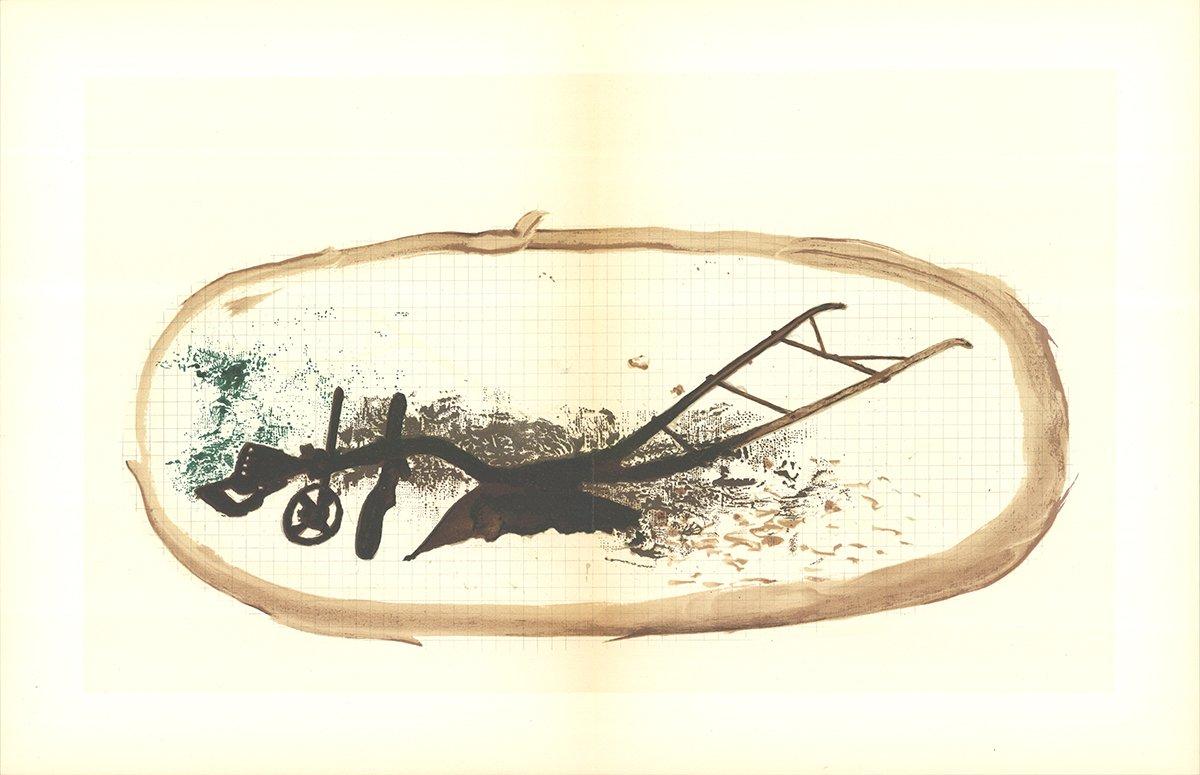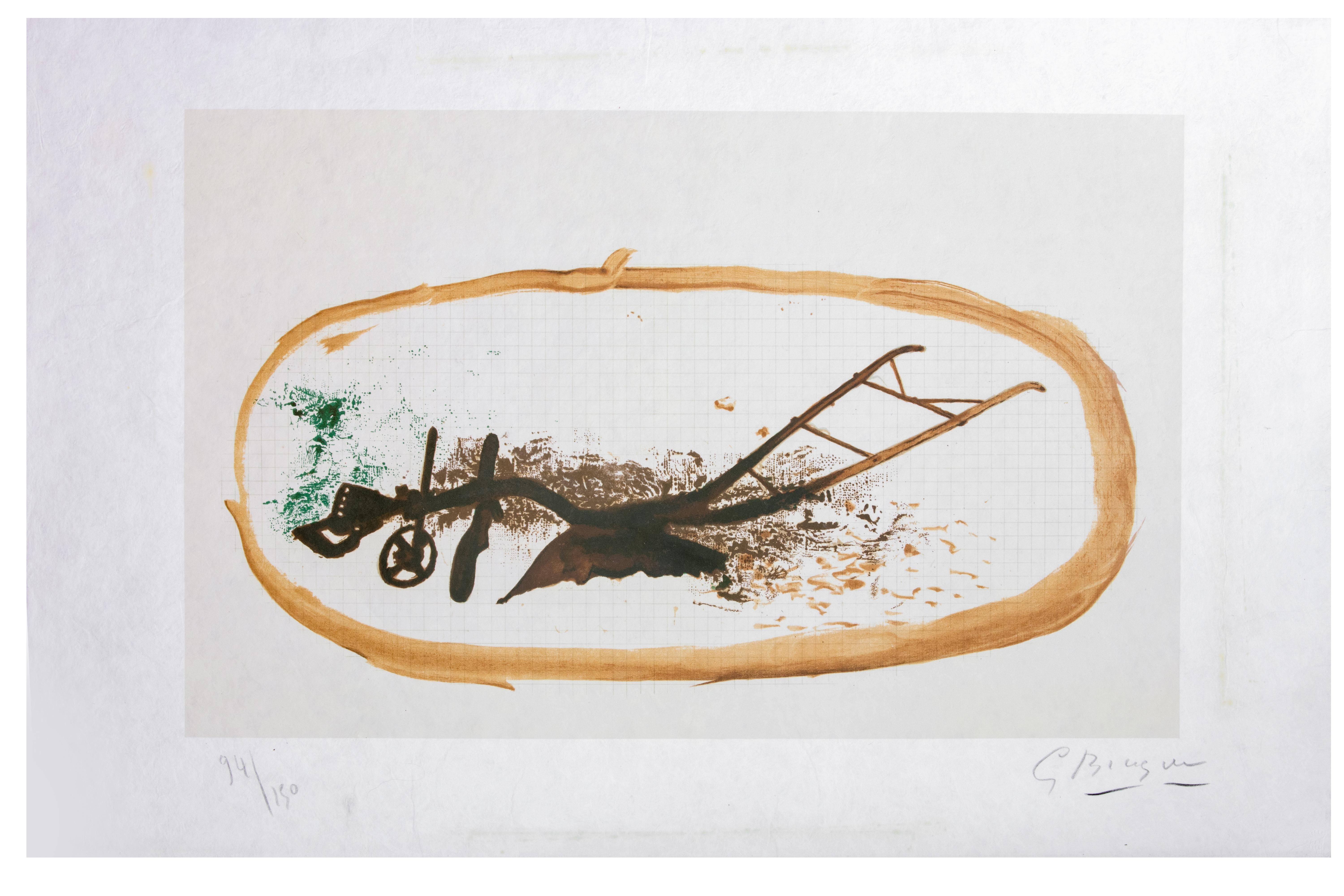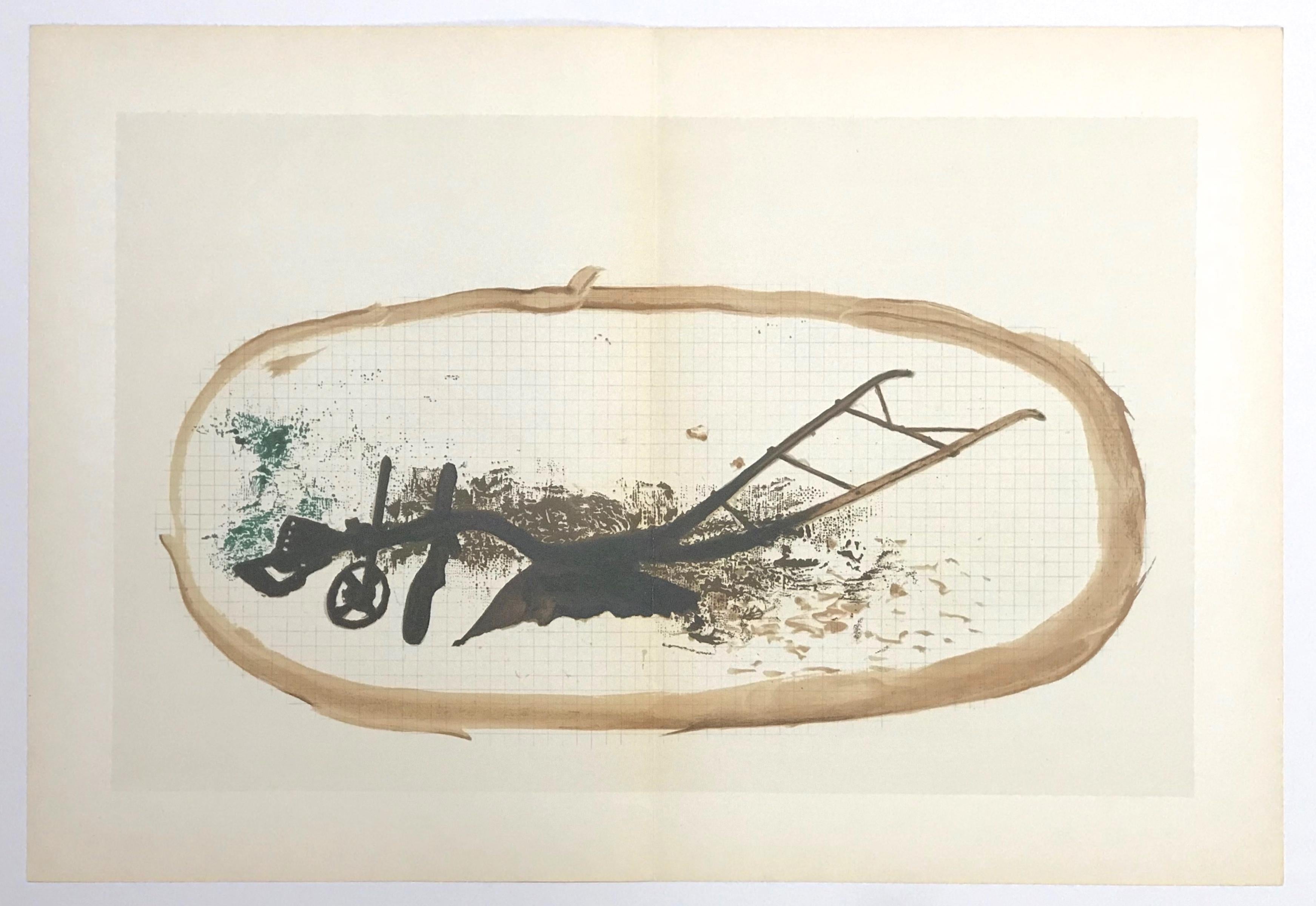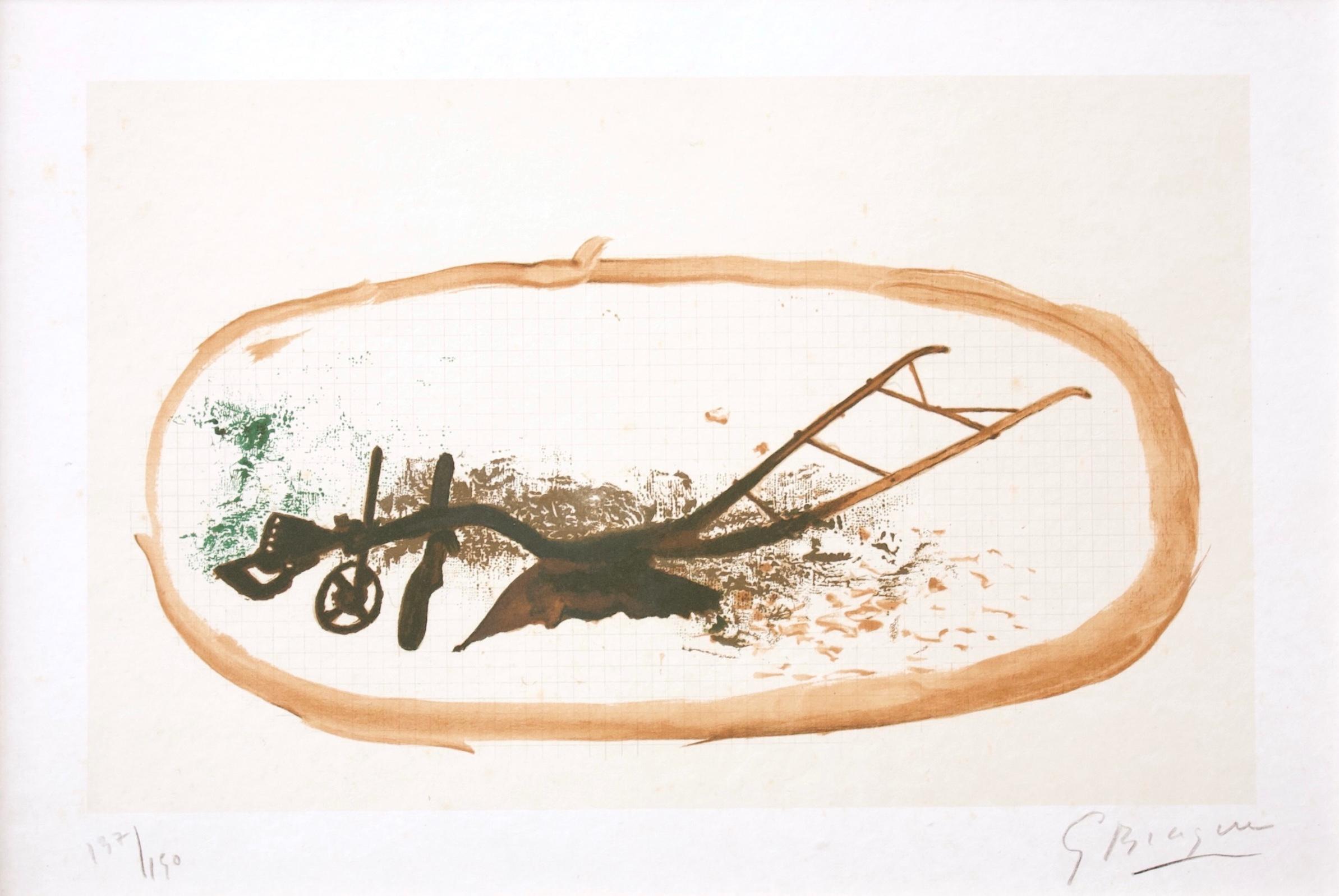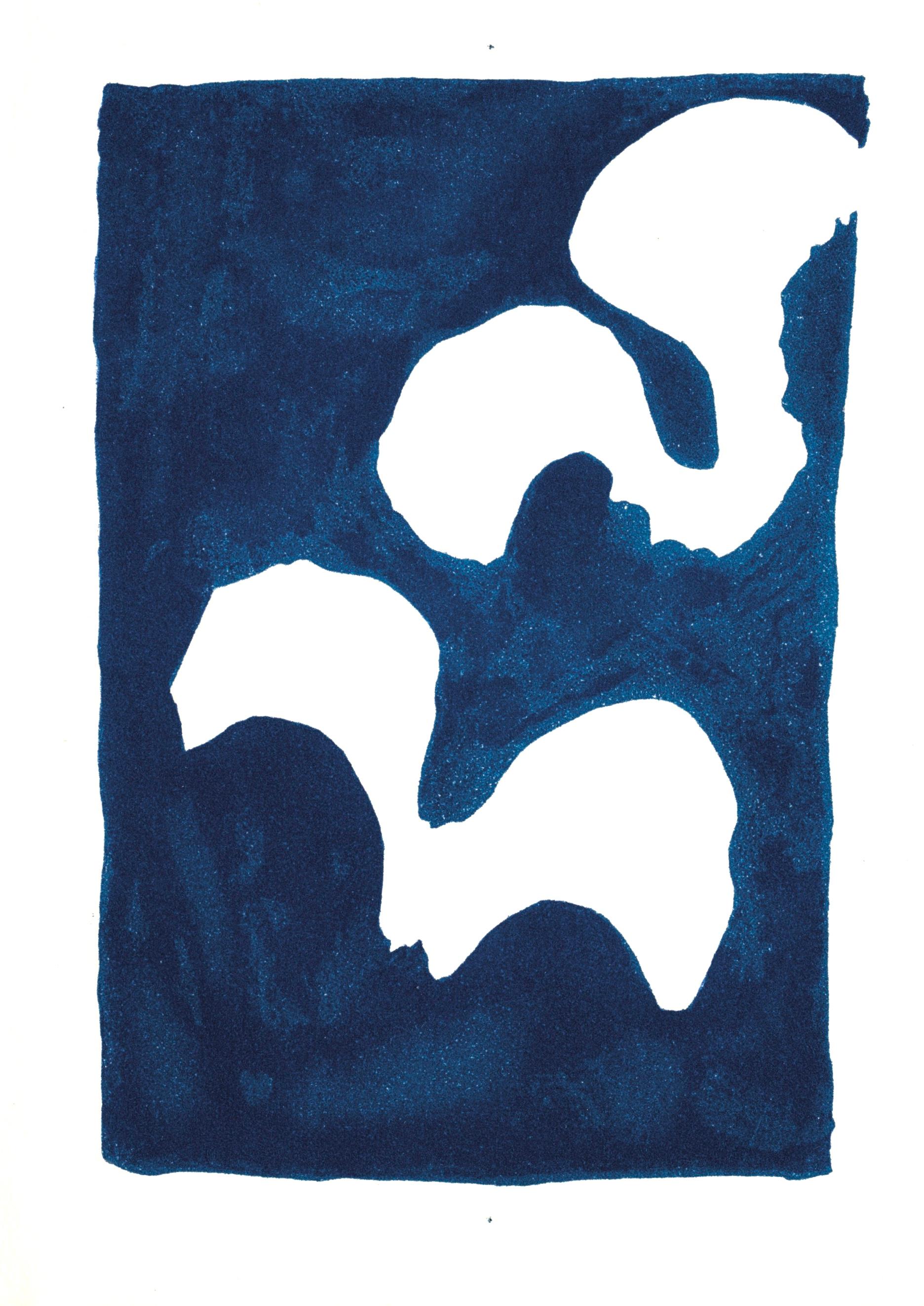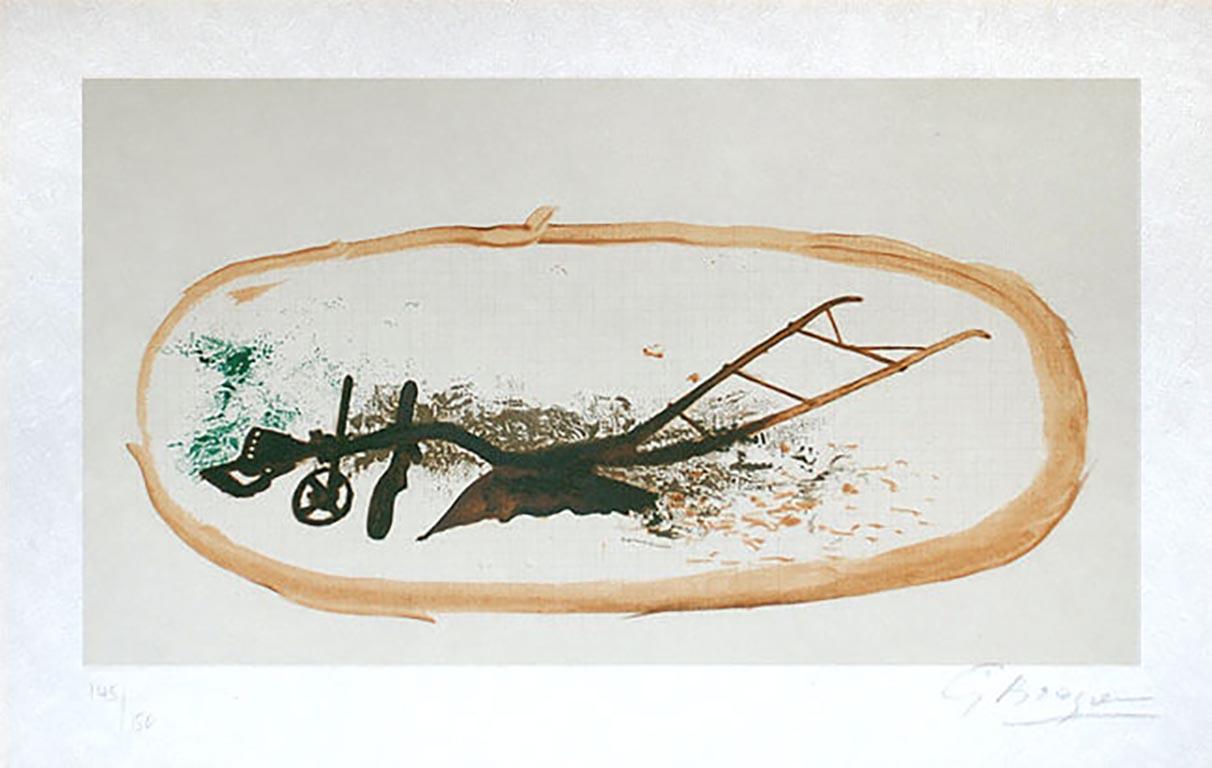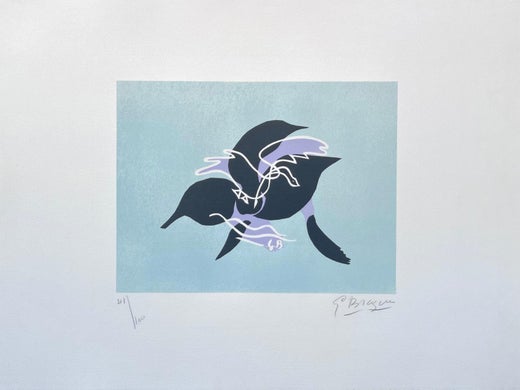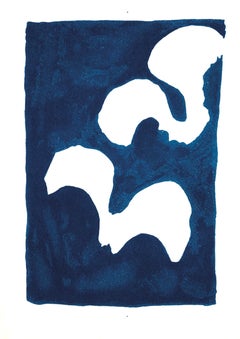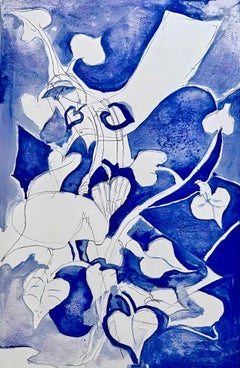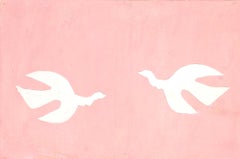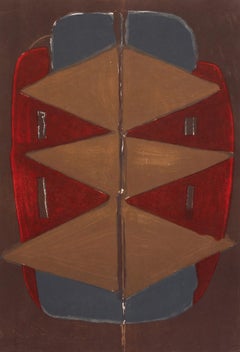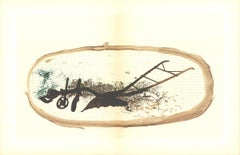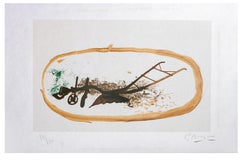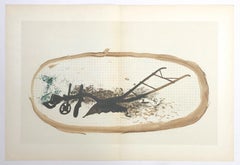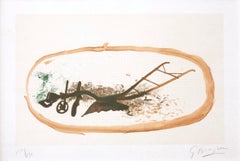This exquisite lithograph by Georges Braque (1882–1963), titled La Charrue (The Plow), originates from the 1960 folio Derriere le Miroir, No. 119, Poetes, peintres, sculpteurs (Poets, Painters, Sculptors), published by Maeght Editeur, Paris, under the direction of Aime Maeght, and printed by Mourlot Freres, Paris. La Charrue reflects Braque’s poetic engagement with nature and his lifelong exploration of structure, color, and balance. Infused with lyrical restraint and Cubist precision, this work embodies Braque’s mastery of composition and his deep sensitivity to form and rhythm.
Executed on velin paper, this lithograph measures 15 x 22 inches (38.1 x 55.9 cm), with centerfold, as issued. Unsigned and unnumbered, as issued. The edition reflects the exceptional quality and craftsmanship of the Maeght and Mourlot collaborations, celebrating Braque’s continued innovation in printmaking and his role as a foundational figure in modern art.
Artwork Details:
Artist: Georges Braque (1882–1963)
Title: La Charrue (The Plow), from Derriere le Miroir, No. 119, Poetes, peintres, sculpteurs (Poets, Painters, Sculptors), 1960
Medium: Lithograph on velin paper
Dimensions: 15 x 22 inches (38.1 x 55.9 cm), with centerfold, as issued
Inscription: Unsigned and unnumbered, as issued
Date: 1960
Publisher: Maeght Editeur, Paris
Printer: Mourlot Freres, Paris
Catalogue raisonne reference: Vallier, Dora, et al. Braque, the Complete Graphics: Catalogue Raisonne. Translated by Robert Bononno, Gallery Books, 1988, illustration 150
Condition: Well preserved, consistent with age and medium
Provenance: From the 1960 folio Derriere le Miroir, No. 119, Poetes, peintres, sculpteurs (Poets, Painters, Sculptors), published by Maeght Editeur, Paris
About the Publication:
Derriere le Miroir (translated as "Behind the Mirror") was an iconic French art periodical published from 1946 to 1982 by Maeght Editeur, one of the most influential art publishers of the 20th century. Founded by Aime Maeght in Paris, the publication was conceived as a visual and literary collaboration between leading modern artists, poets, and critics. Each issue functioned as both an exhibition catalogue and a work of art in itself—featuring original lithographs printed directly from the artists' stones or plates, alongside essays, poems, and critical commentary. Over the course of 36 years, Derriere le Miroir produced more than 250 issues and showcased an extraordinary roster of artists including Henri Matisse, Marc Chagall, Joan Miro, Georges Braque, Alexander Calder, Fernand Leger, Pierre Bonnard, Alberto Giacometti, Eduardo Chillida, Ellsworth Kelly, Francis Bacon, Paul Rebeyrolle, Claude Garache, Antoni Tapies, Bram van Velde, Pierre Alechinsky, Pol Bury, Shusaku Arakawa, and Gerard Titus-Carmel. Printed in the ateliers of Mourlot, Arte, and Imprimerie Moderne du Lion, the periodical set new standards for quality in color lithography, combining fine art printing with elegant typography and poetic text. Beyond its visual brilliance, Derriere le Miroir also became a cultural chronicle of postwar European modernism. Each issue coincided with exhibitions held at Galerie Maeght, providing a collectible and widely accessible record of groundbreaking shows. Its integration of image, text, and philosophy created a dialogue between art and literature that elevated the modern art book to new aesthetic heights. Today, Derriere le Miroir remains one of the most sought-after and historically significant art publications, prized by collectors and scholars alike for its craftsmanship, influence, and its role in defining the visual language of 20th-century modernism. The Maeght Foundation in Saint-Paul-de-Vence continues to honor this legacy through exhibitions and archival preservation of the series, affirming Derriere le Miroir's enduring place in the history of modern art and fine art publishing.
About the Artist:
Georges Braque (1882–1963) was a French painter, sculptor, and printmaker whose groundbreaking exploration of form and perspective helped define the course of modern art. Alongside Pablo Picasso, Braque co-founded Cubism, revolutionizing the visual language of painting through the deconstruction and reassembly of objects into abstract, geometric planes. His work evolved from Fauvism to analytical and synthetic Cubism, blending structure, color, and texture into a refined harmony that profoundly influenced generations of artists. In his later years, Braque expanded into still life, sculpture, and printmaking, maintaining a lyrical sensitivity that distinguished his mature style. His artistic legacy is closely linked to the great innovators of his time—Henri Matisse, Alexander Calder, Marc Chagall, Salvador Dali, Joan Miro, Wassily Kandinsky, Marcel Duchamp, and Man Ray—whose collective genius redefined 20th-century art. Braque’s works are represented in major museums worldwide, including the Centre Pompidou, MoMA, the Guggenheim, and the Tate. The highest price ever paid for a Georges Braque artwork is approximately $15 million USD, achieved in 2013 at Christie’s New York for Paysage a la Ciotat (1907).
Georges Braque La Charrue, Braque Derriere le Miroir, Braque Maeght Editeur Paris, Braque Mourlot Freres, Braque 1960 edition, Braque lithograph, Braque abstraction, Braque collectible lithograph, Braque modernist, Braque Maeght Paris publication.
